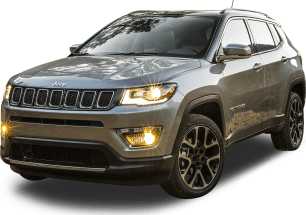The lack of any entry-grade models means the price list and RRP range for the VW Tiguan 2019 line-up is higher than many competitor SUVs, like the Mazda CX-5, Toyota RAV4 and Honda CR-V. So, how much does it cost?
The model comparison is simple enough - it’s the 132TSI Comfortline vs the 162TSI Highline. Well, for the ‘regular' range, anyway.
The 132TSI lists at $42,490, and it has a lengthy standard features list, including 18-inch alloy wheels, LED headlights with LED daytime running lights (yep, no bi-xenon headlights here!), front fog lights, a power tailgate, keyless entry and push-button start, three-zone climate control air conditioning, cruise control, auto headlights and auto wipers, electric folding side mirrors, an auto-dimming rearview mirror, cloth seat trim and a tyre-pressure-monitoring system.
Multimedia needs are met through an 8.0-inch multimedia touchscreen with GPS sat nav, Apple CarPlay and Android Auto - so you can plug your iPhone or other device in to mirror its screen - three USB ports, and of course there’s Bluetooth phone and audio streaming as well. No Tiguan has digital DAB radio capability, nor a DVD player, but there is a CD player to pump the tunes through eight speakers.
If you want, there’s a sort of comfort pack that VW calls the 'Luxury Package', which adds leather trim, electric seat adjustment, heated front seats and a sunroof ($4000).
Stepping up to the 162TSI means a price increase to $49,490, but this improves the standard-gadgets list.
Highlights include 19-inch alloy wheels, LED tail-lights, leather seats, heated front seats with electric adjustment and memory settings, heated outboard rear seats, a bigger screen (9.2-inch) for the navigation system, ambient interior lighting, the convenience of auto high-beam lighting with anti-dazzle function (Dynamic Light Assist), adaptive cruise control and adaptive chassis control.
For a limited time there’s also the Wolfsburg Edition 162TSI, with 500 examples offered. It costs $55,490 and adds plenty of additional desirable equipment.
The Wolfsburg adds the high-tech Sound & Vision Package (with the digital instrument cluster that VW calls Active Info Display, a surround-view camera, Dynaudio sound system with nine speakers and a subwoofer, and ambient interior lighting), the R-Line Package (R-Line body styling and interior trim, 20-inch alloy wheels in black, and VW’s ‘progressive steering’ system), plus further black exterior trim elements, dark window tint, and a head-up display. There’s a Wolfsburg badge at the back, and the choice of Oryx White Pearlescent, Deep Black Pearl or Indium Grey Metallic for your paint colours.
The regular 2019 Tiguan range has six colours to choose from: Pure White, Tungsten Silver Metallic, Indium Grey Metallic, Atlantic Blue Metallic and Ruby Red Metallic. There’s no gold to be seen, and the orange that was offered earlier on has been axed, too.
Both trim levels get floor mats as standard, so there’s no need to look at the accessories list for those - and while there are heat insulating tinted windows, you can get dark tint on the high-grade. Other options include 19-inch rims, a towbar kit, roof bars with a roof box (there are roof rails as stand on both grades). You’ll need to shop around the aftermarket for a light bar, bull bar or nudge bar.
How many seats does a Tiguan have? Five… unless you choose the Tiguan Allspace, which has third-row seating. There’s a space-saver spare with tool kit under the boot floor of all Tiguans.
No model comes with a heated steering wheel, but you can option a panoramic sunroof ($2000).
Safety goes beyond lane assist and ESP - read the section below for the full breakdown.



















































 copy.png)











